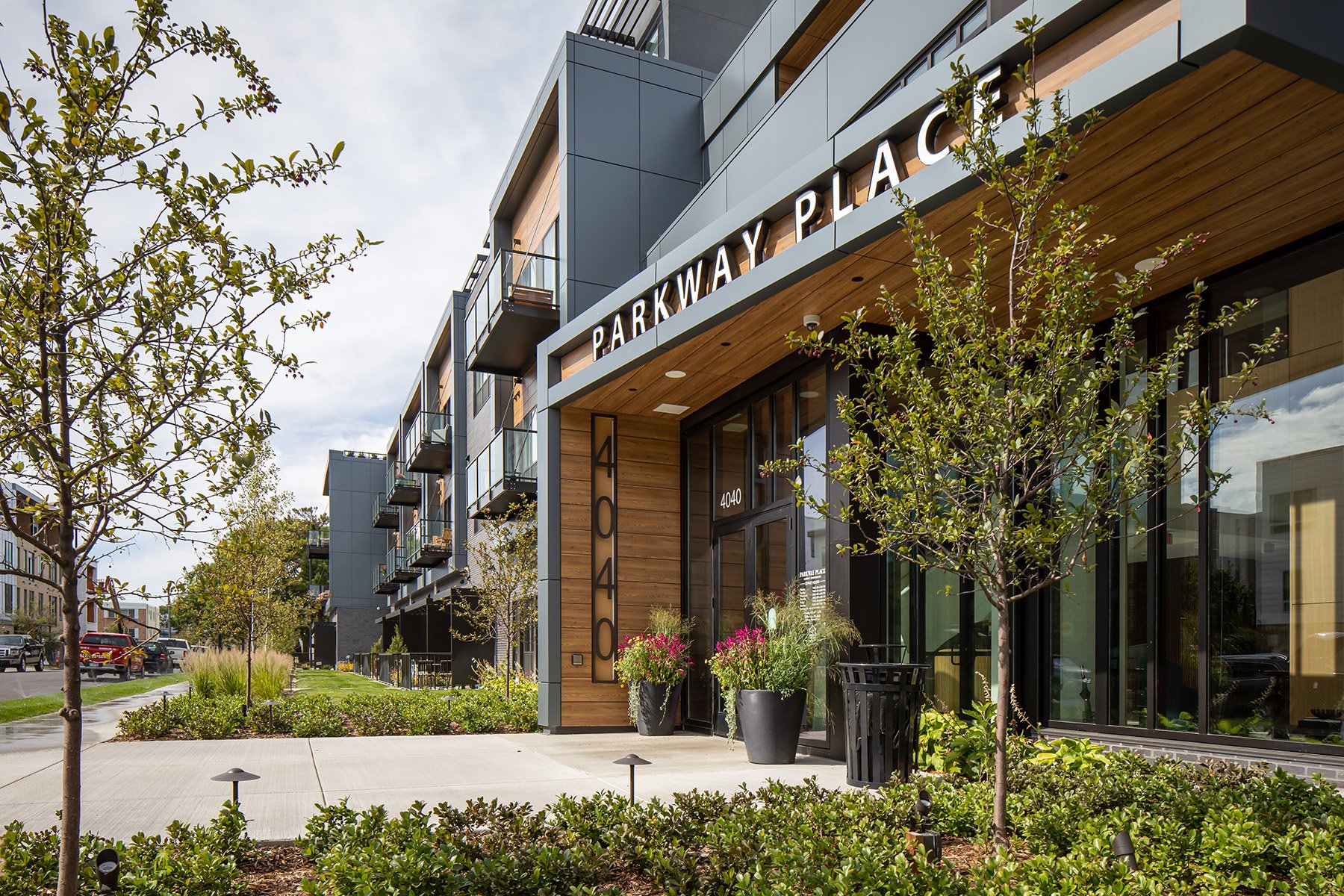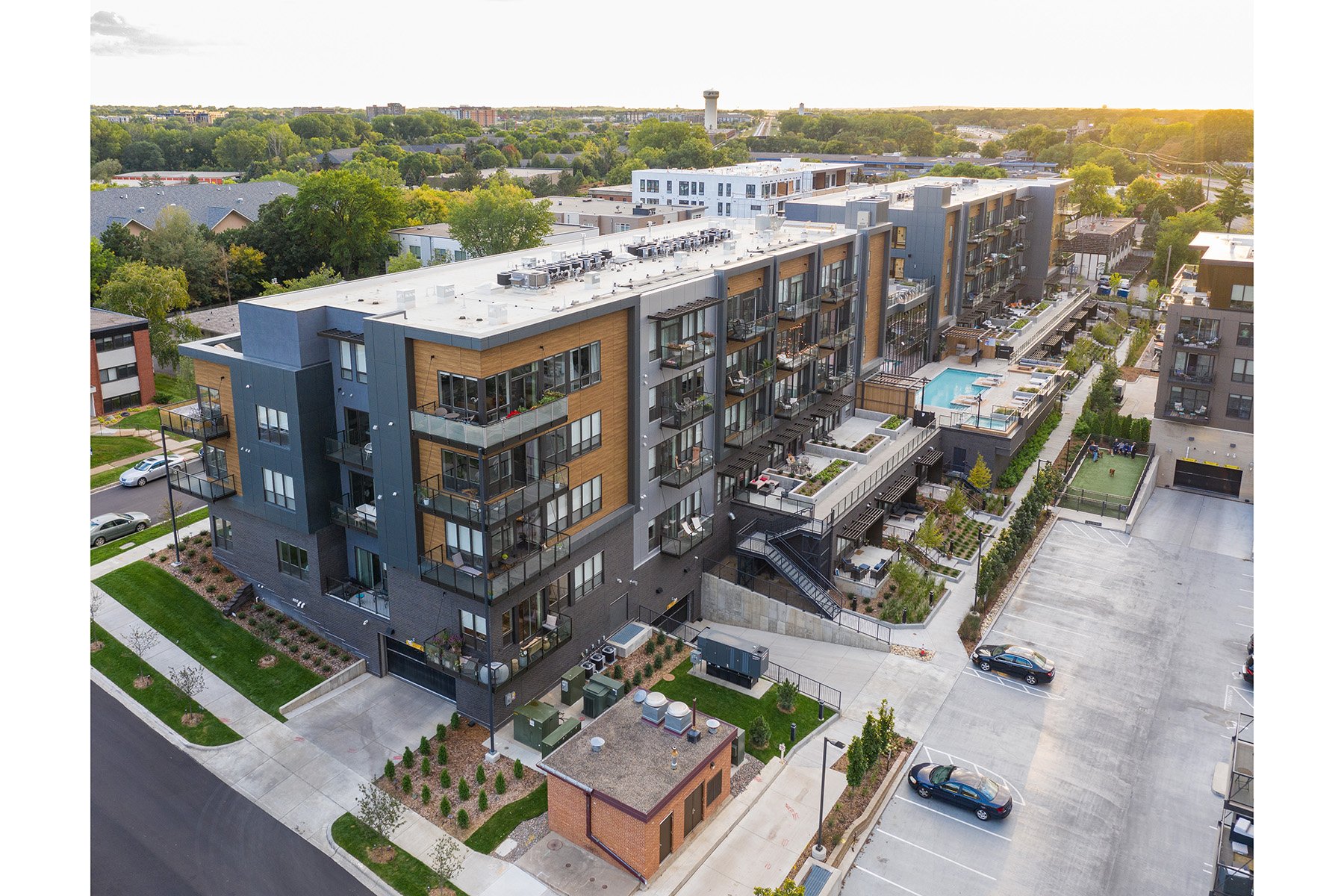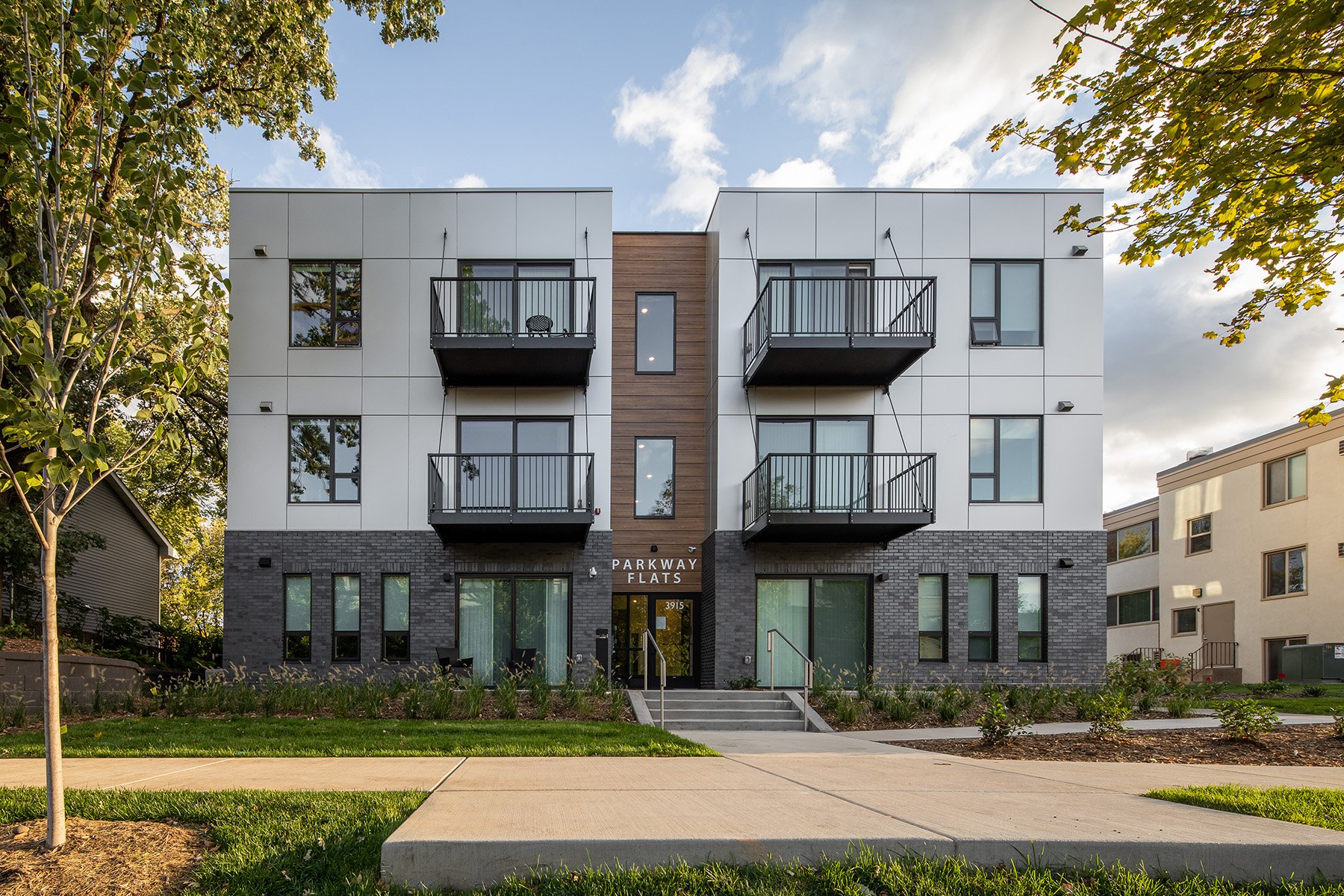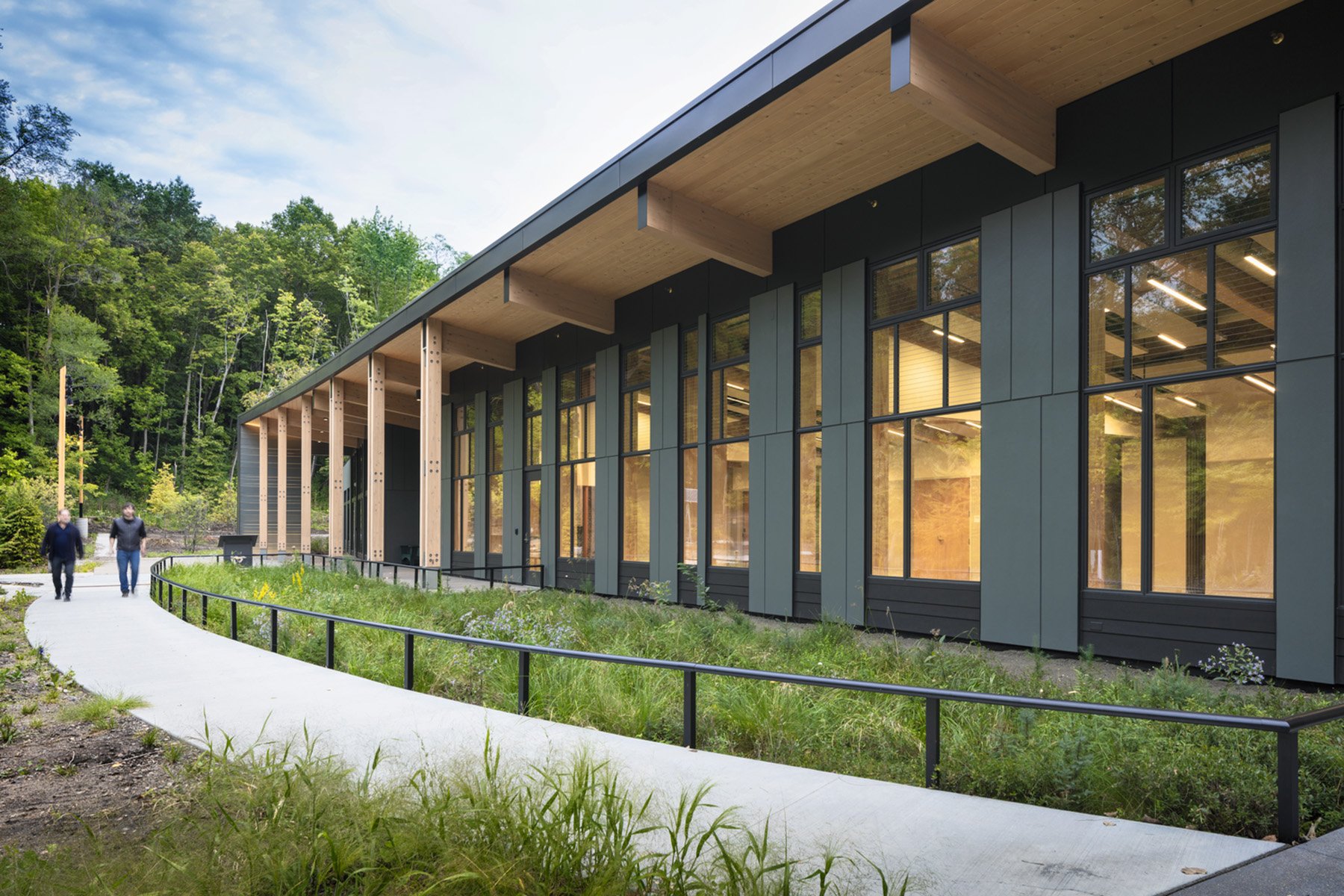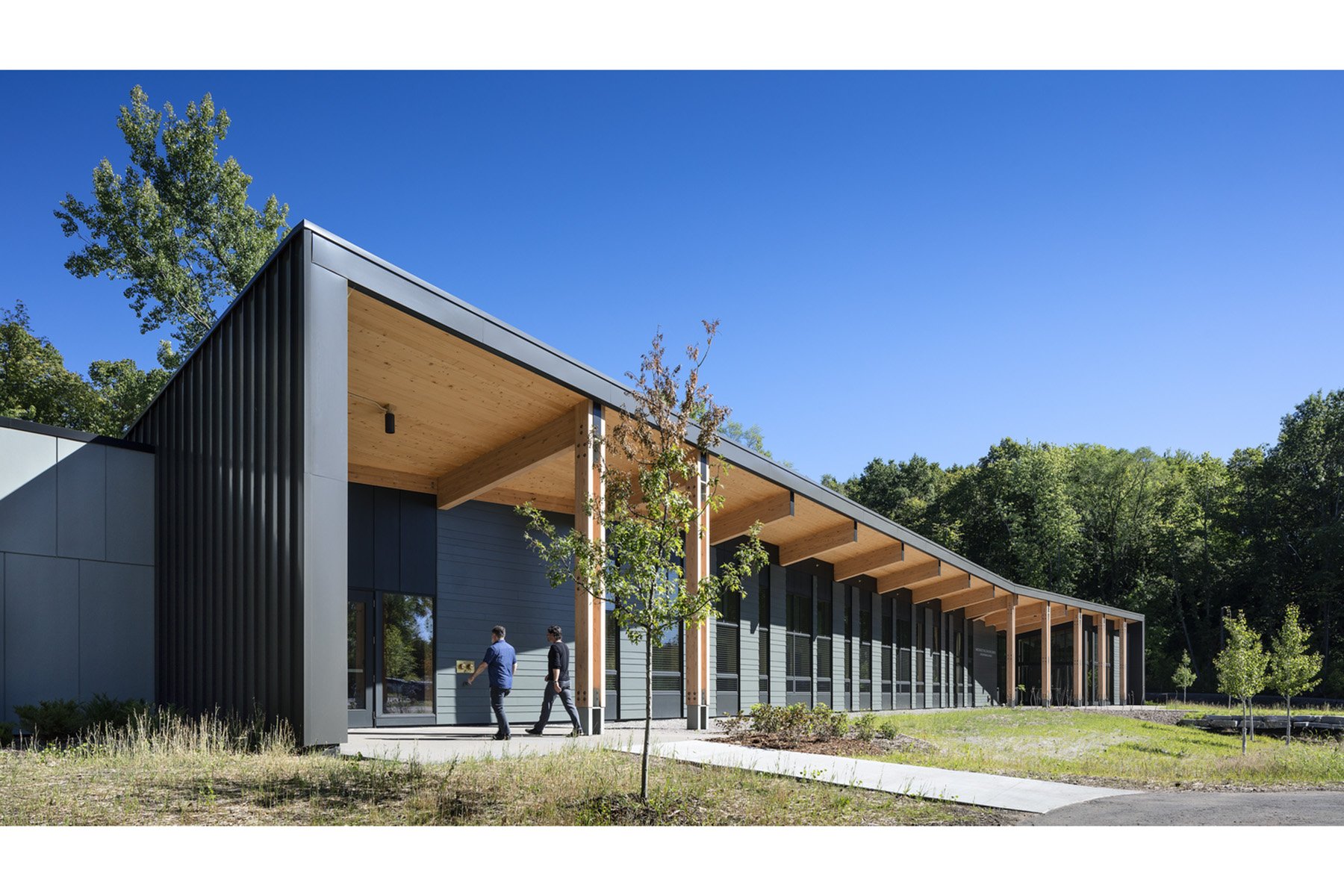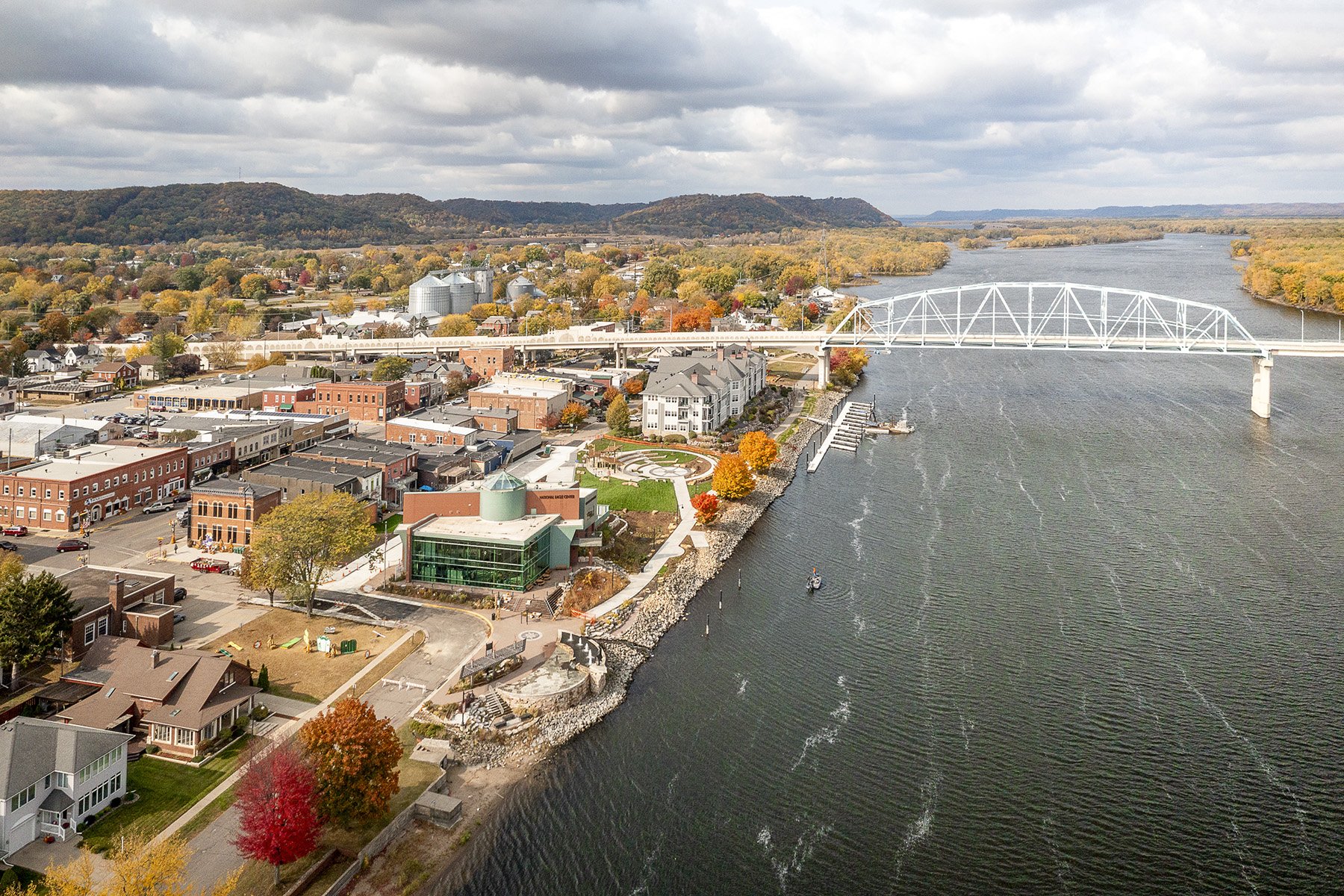Spotlight on St. Louis Park
The first-ring Twin Cities suburb shows civic and political leadership in the fight against climate change
By Justin R. Wolf | December 21, 2023
St. Louis Park’s Recreation Outdoor Center, designed by RSP Architects and opened in 2017, offers winter charm, year-round flexibility, and lower energy consumption than an indoor rink. Photo by Peter J. Sieger.
2023 PRINT ANNUAL
This feature appeared in the 2023 ENTER print annual, available for purchase here.
Here is an inconvenient truth: Climate action only has measurable impacts when it’s carried out on a large, often community-wide scale. High-efficiency buildings are the future, but inspiring examples here and there are not enough to address the climate crisis. Moving the needle requires public leadership.
The City of St. Louis Park has been heeding this mandate for more than a decade. It was among the first communities in the state to formalize a green building policy. All city buildings and operations are powered by 100-percent renewable energy. And the city is one of only a handful of inner-ring suburbs that isn’t entirely car-dependent, thanks to a vast and growing network of interconnected sidewalks, trails, and bikeways.
“We felt it was important as a city to lead by example, so we could at least say to our residents and businesses: ‘We’re in this—we need you in this, too,’” says St. Louis Park Mayor Jake Spano.
St. Louis Park Mayor Jake Spano in the City Council chambers. Spano’s second and final term concludes on January 2, 2024. Photo by Chad Holder.
For cities, leading by example is a balancing act. Constituents and community members hold a variety of perspectives and getting too far out front of public opinion can sometimes lead to political backlash. Yet, city officials have an obligation to take the long view, serving today’s and tomorrow’s residents and businesses. Often, success starts with small, incremental steps that build into bigger leaps forward.
St. Louis Park was the first city in the state to introduce organized curbside recycling collection, which eventually expanded to curbside organics collection. In 2012, the city joined Minnesota’s GreenStep Cities program and quickly got to work on decreasing the use of electricity and natural gas in city buildings. A few years later, the city adopted a plan to match 50 percent of utility rebates for homeowners who make efficiency upgrades to their insulation and heating and cooling systems. Important measures, but small steps, nonetheless.
Then, in 2016, the city council was paid a visit by a local student-led climate advocacy group called iMatter. The high school students had prepared an analysis of the city’s carbon footprint. Their report card to the council gave high marks for achievements in water quality, recycling, and walkability. “We got a D in climate,” says Spano. This was a wake-up call. Two years later, the city council unanimously approved a climate action plan. Outlined in the plan are various pathways to realizing a net-zero carbon footprint by 2040, along with 2030 midterm goals like reducing energy consumption in residential buildings by 35 percent and requiring that all new construction meet net-zero energy standards.
“We felt it was important as a city to lead by example, so we could at least say to our residents and businesses: ‘We’re in this—we need you in this, too.’”
It’s fitting that the most aggressive city climate plan in the state was essentially conceived in a high school classroom. Spano recognizes the moral authority that the iMatter students brought to the table. “We’re looking into the faces of our future,” he says. He also recalls saying to the students: “I hope all of you are ready to get to work, because we will need you and we want you as part of this process.” Two of the students already had seats on the city’s Environment and Sustainability Commission and were tasked with helping formulate the Climate Action Plan.
One of those students, Jayne Stevenson, who now lives in Seattle and works with the environmental nonprofit Pacific Environment, joined iMatter in 2014 as a sophomore at St. Louis Park High School.
“I remember feeling like this great opportunity was available to us as high school students,” says Stevenson. “I’m most interested in policy issues, which is why I was compelled to work with iMatter. Our message centered on the frustration and fear that our generation faces living in a world of unmitigated climate change, as well as the hope we have that it’s not too late. If our leaders act, it will make an impact on reducing emissions and influence elected representatives in other jurisdictions to follow suit.”
St. Louis Park sustainability manager Emily Ziring says that getting the city to net-zero carbon will require “electrification, electrification, electrification! We have to get off natural gas.” With that goal in mind, the city is incentivizing the installation of electric heating and cooling. Photo by Chad Holder.
“That youth voice is a constant driver,” says St. Louis Park sustainability manager Emily Ziring. “I wouldn’t be in this role if it weren’t for the youth of St. Louis Park.”
Pieces of the Puzzle
With the Climate Action Plan in place, the city turned its attention to reaching the stated benchmarks. “The goal that we laid out was ambitious, and we did not have all the tools in place to get there,” Spano concedes. To strengthen motivation for businesses and citizens to be good stewards, city leaders turned to incentive programs. The city’s Climate Champions program, for example, provides energy efficiency assistance and cost-sharing options to any resident or business owner who elects to implement efficiency or electrification upgrades to their property.
Powering city operations with 100-percent renewable electricity—made possible through subscription to Xcel Energy’s voluntary Windsource program—is no small thing. Achieving the same feat on a citywide scale is far more challenging. Within the 100-percent renewable goal for the community is a 10-percent, in-boundary solar goal, meaning 10 percent of the city’s needed energy is intended to be generated from rooftop solar arrays within St. Louis Park. To boost that effort, in 2021 the city launched Solar Sundown, a program that subsidized federal tax incentives up to an additional six percent for homeowners who install their own rooftop solar. Solar Sundown brought the total tax credits to 30 percent or more depending on whether the installation occurred in an area deemed an environmental justice priority area.
Solar is only one piece of the puzzle in Minnesota, which ranks 40th among all states in estimated solar energy system performance, according to the Solar Energy Industries Association. “Not every building is going to be a great candidate for solar, but we still try to impress upon people that they can be 100-percent renewable,” says Ziring, alluding to Xcel’s Windsource. “As long as you have an electricity meter, you’re eligible for that program in St. Louis Park. We’re always looking at new ways to incentivize taking the right action.”
Photos 1 and 2: DJR designed Parkway Place—a four-level, 95-unit building with underground parking—using Green Communities criteria. Photo 3: Parkway Flats, a six-unit affordable housing project, is close to net-zero energy, says DJR’s Sheldon Berg, AIA. All photos by Kory Kevin Studio.
The city’s Green Building Policy, adopted in 2010, has been updated multiple times, getting stronger with each new iteration, says Sean Walther, the city’s planning manager. To date, 26 projects have responded to the policy, 25 of which were new construction. Notable projects include The Quentin, a 79-unit, energy-efficient apartment building designed by Collaborative Design Group that features all-electric units, drought-resistant landscaping, a green roof and pollinator garden, and a solar array large enough to offset common area electricity use. The 112-unit Parkway 25, designed by DJR, and the 11-story 10 West End office building, designed by Ryan A+E, are both LEED-certified buildings that contribute to St. Louis Park’s growing density and walkability.
“I love that the city has taken a stand—that they’ve made the policy a key component of doing business in St. Louis Park,” says DJR’s Sheldon Berg, AIA, the principal for the Green Communities–certified Parkway Place and Parkway Flats (pictured above), both completed in 2022. “And the city has been really good to work with on compliance and verification.”
In its current form, the Green Building Policy requires the use of third-party rating systems (LEED, WELL, Green Communities, and others) for all new construction. There are also 11 new policy overlays focused on areas of particular interest to the city, like water conservation and solid waste management. One of the overlays addresses deconstruction and building reuse. “There’s a crucial need to do more about construction and demolition waste,” says Ziring. “Now we have an explicit requirement around reusing certain types of buildings as much as possible.”
Photos 1 and 2: The Zero Energy–certified Westwood Hills Nature Center, designed by HGA, received the prestigious AIA COTE Top Ten Award in 2023. Photo by Peter J. Sieger.
The city already had a model to cue from in the HGA-designed interpretive center at Westwood Hills Nature Center (pictured above), completed in 2020 and recently awarded Zero Energy certification from the International Living Future Institute and a 2023 AIA COTE Top Ten Award. Six of the center’s exterior benches were built from the ceiling beams from the old interpretive center, and the majority of the remaining materials were salvaged by Better Futures Minnesota for reuse and recycling to reduce the project’s embodied carbon, overall.
The Path to 2040
“We encourage cities to look at their community-wide emissions data and focus on what makes a difference,” says Maureen Colburn, AIA, climate solutions studio leader with architecture and engineering firm LHB. “It’s really hard to manage something unless you’re measuring.”
For more than a decade, LHB has provided St. Louis Park with technical assistance in meeting sustainability and carbon reduction goals. The firm worked closely with iMatter and the Great Plains Institute on the Climate Action Plan, and it conducted extensive scenario planning to identify high-impact actions that could get the city closer to its 2040 carbon-neutrality goal. LHB also leads the state’s Regional Indicators Initiative, which provides cities with essential data and tools to ensure their climate planning does what it sets out to do. “We’ve tracked citywide greenhouse gas emissions for many cities,” says Colburn. “We have St. Louis Park’s data from 2007 to 2021. They are aware that buildings are a major contributor”—to the tune of 60 percent of all citywide emissions.
St. Louis Park planning manager Sean Walther says the Green Building Policy has become more rigorous and impactful with each new iteration. Photo by Chad Holder.
The city responded to this stark reality with, among other measures, the Efficient Buildings Benchmarking Ordinance, passed in 2019, and the Green Building Policy’s requirement for third-party verification. It also enhanced the public realm. Historically, the city has had a good system of sidewalks and trails, but there were gaps, says Sean Walther. In the last decade, the city has added nine miles of sidewalks, five miles of trails, and 23 miles of bikeways. Newly constructed bridges traverse railroad tracks and freeways that were once barriers to Metro Green Line extension access.
“We should try to make [walking as a form of transportation] as convenient and attractive an option as possible,” says Walther. Where walking, biking, and public transit aren’t viable modes, 335 Level 1 and 2 electric vehicle chargers, with service capacity for 850 more, are being installed in developments across the city.
Getting a city with 50,000 residents and a significant business and industrial footprint to net-zero carbon is an immense undertaking. When asked what is needed to get St. Louis Park closer to that goal, Ziring responded: “Electrification, electrification, electrification! We have to get off natural gas.” To that end, the city is phasing out rebate incentives for efficient natural-gas furnaces and boilers, opting instead to incentivize the installation of electric heating and cooling appliances.
While 2040 may seem distant, the 2030 horizon is well within view. Minnesotans who are working to create a healthier, more resilient future—from state and local leaders to young people like the iMatter students—can look to St. Louis Park for inspiration. The city is modeling a path to cleaner air, greater mobility, efficient heating and cooling, more renewable energy production, and energy independence.




